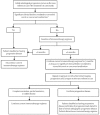Imaging in neuro-oncology
- PMID: 29511385
- PMCID: PMC5833173
- DOI: 10.1177/1756286418759865
Imaging in neuro-oncology
Abstract
Imaging plays several key roles in managing brain tumors, including diagnosis, prognosis, and treatment response assessment. Ongoing challenges remain as new therapies emerge and there are urgent needs to find accurate and clinically feasible methods to noninvasively evaluate brain tumors before and after treatment. This review aims to provide an overview of several advanced imaging modalities including magnetic resonance imaging and positron emission tomography (PET), including advances in new PET agents, and summarize several key areas of their applications, including improving the accuracy of diagnosis and addressing the challenging clinical problems such as evaluation of pseudoprogression and anti-angiogenic therapy, and rising challenges of imaging with immunotherapy.
Keywords: 18F-DOPA; 18F-FET; 18F-FLT; PET-CT; brain tumor; glioblastoma; iRANO; immunotherapy; neuro-oncology; radiomics.
Conflict of interest statement
Conflict of interest statement: The authors declare that there is no conflict of interest.
Figures




References
-
- Hui ES, Cheung MM, Qi L, et al. Towards better MR characterization of neural tissues using directional diffusion kurtosis analysis. NeuroImage 2008; 42: 122–134. - PubMed
Publication types
LinkOut - more resources
Full Text Sources
Other Literature Sources

